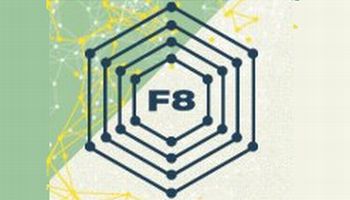Facebook delivered new services, including a “Timeline” at its annual f8 developer conference.
Introducing the new approach to a user’s profile on the popular social networking platform, Mark Zuckerberg, founder and CEO of Facebook, described the new Timeline as a way to tell the story of a user’s life. He said it is a “new way to express who you are.”
Facebook Doubles
The f8 keynote began with actor/comedian Andy Samberg (right in picture) taking the stage and hamming it up as Zuckerberg until the real Zuckerberg (left in picture) came on to address the Facebook faithful. And faithful the platform’s users are.
 Zuckerberg said, “For the first time ever in a single day we had 500 million people use Facebook.”
Zuckerberg said, “For the first time ever in a single day we had 500 million people use Facebook.”
In a blog post aimed at developers, Bret Taylor, chief technology officer at Facebook, said, “As we have continued to introduce more features on Facebook Platform, now more than 500 million people engage with Facebook across more than seven million applications and Websites every month. Compared to f8 last year, this is close to double the number of people and triple the apps and Websites.”
Taylor further described Timeline as “a page on which you can put the events and activities that matter most to you. We provide some of the most important stuff that you’d want to put there, like photos and major life events – but those types of content are really just the start. With the Open Graph, you, as Facebook developers, can enable people to truly make their Timelines their own”.
In addition, he said all developers will have access to a pre-release version of Timeline for testing after their applications are configured to use Open Graph actions and objects.
Taylor also said Timeline will launch to users in the coming weeks. People will be able to add applications to their Timeline to show friends what they love, seamlessly update Timeline with their activity as they go, and have an easy way to re-engage with the application, he said.
No Vanishing Act
In a separate post, Sam Lessin, a product manager at Facebook said, “The way your profile works today, 99 percent of the stories you share vanish. The only way to find the posts that matter is to click “Older Posts” at the bottom of the page. Again. And again.
“Imagine if there was an easy way to rediscover the things you shared, and collect all your best moments in a single place,” Lessin said. “With timeline, now you have a home for all the great stories you’ve already shared. They don’t just vanish as you add new stuff. Timeline is wider than your old profile, and it’s a lot more visual. The first thing you’ll notice is the giant photo right at the top. This is your cover, and it’s completely up to you which of your photos you put here.
“As you scroll down past your cover, you’ll see your posts, photos and life events as they happened in time. You choose what’s featured on your timeline. You can star your favourites to double their size or hide things altogether,” he explained.
Facebook also introduced a new beta of Open Graph. “The Open Graph is the most significant update to Platform since it launched in 2007, expanding the capabilities and opportunities for social applications, from music to TV to news to lifestyle applications such as cooking, fitness and travel,” Taylor said.
Application discovery is an important part of the Open Graph philosophy, he added. The structure of Open Graph enables applications to grow more quickly based on usage. “The more engaging your app is, the more people will discover it on Facebook,” he said,
Open Graph Explained
A description of the Open Graph Protocol on the Facebook site reads: “The Open Graph Protocol enables you to integrate your Web pages into the social graph. It is currently designed for Web pages representing profiles of real-world things – things like movies, sports teams, celebrities, and restaurants. Including Open Graph tags on your Web page, makes your page equivalent to a Facebook page.
 “This means when a user clicks a Like button on your page, a connection is made between your page and the user. Your page will appear in the “Likes and Interests” section of the user’s profile, and you have the ability to publish updates to the user. Your page will show up in the same places that Facebook pages show up around the site (e.g., search), and you can target ads to people who like your content. The structured data you provide via the Open Graph Protocol defines how your page will be represented on Facebook,” it sates.
“This means when a user clicks a Like button on your page, a connection is made between your page and the user. Your page will appear in the “Likes and Interests” section of the user’s profile, and you have the ability to publish updates to the user. Your page will show up in the same places that Facebook pages show up around the site (e.g., search), and you can target ads to people who like your content. The structured data you provide via the Open Graph Protocol defines how your page will be represented on Facebook,” it sates.
The Open Graph Beta is now available to all Facebook developers. “This beta gives you access to the docs and tools you need to add Open Graph actions and objects to your app,” Taylor said.
Facebook also introduced new analytics for developers. “From the Dev App, you will be able to see analytics for all the Open Graph activity published by your app,” Taylor said. “You will be able to optimise your app’s Graph Rank based on this information.”





